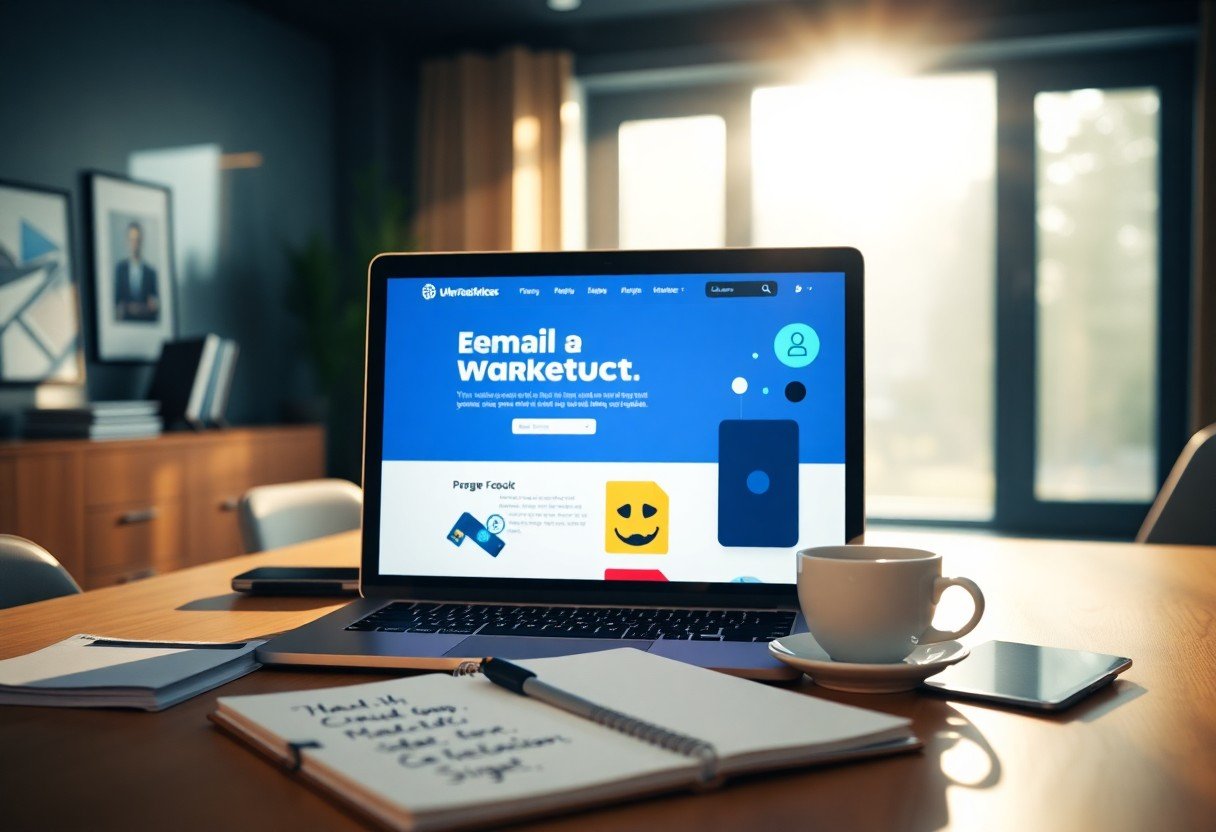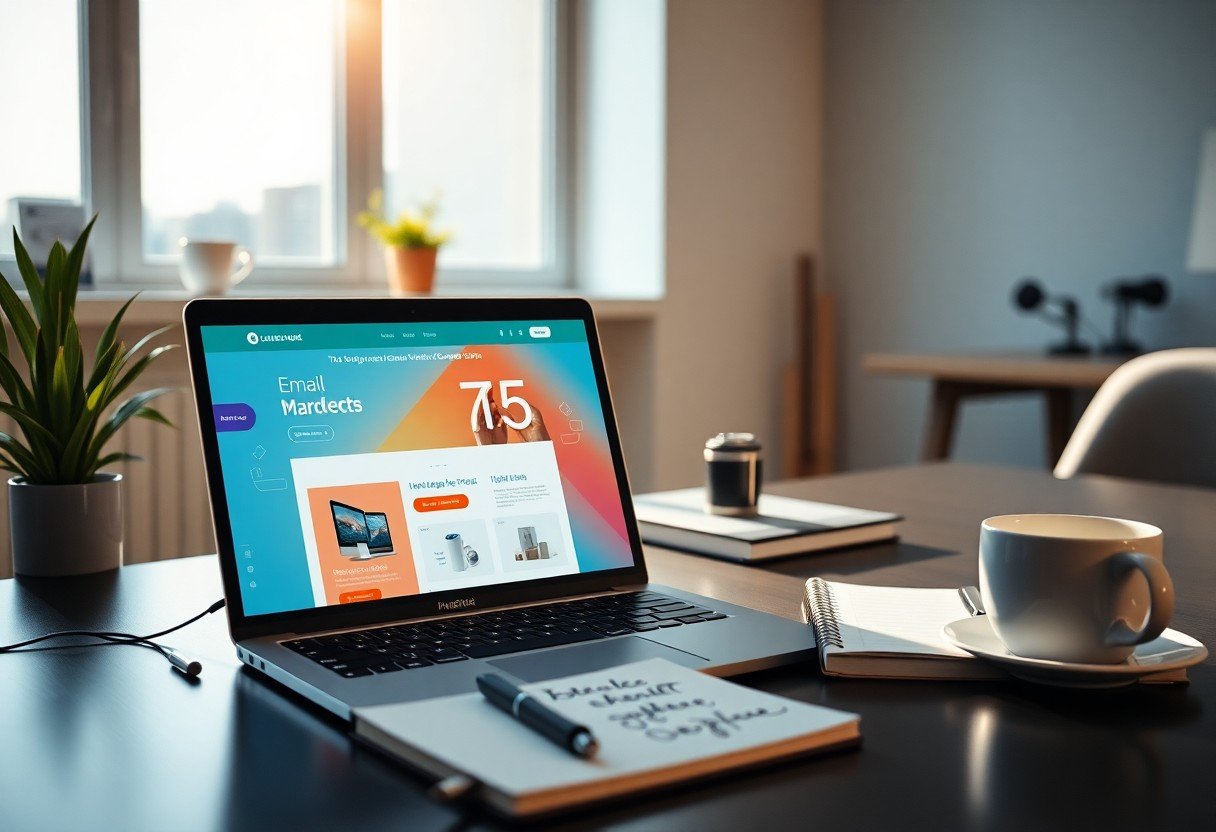Email remains your most powerful tool for nurturing and closing high-value prospects in today’s digital landscape. When you’re selling premium products or services, your email marketing approach needs to be sophisticated, personalized, and value-driven. Your prospects investing significant amounts require more touchpoints, deeper relationship building, and compelling proof points before making their decision. In this guide, you’ll discover proven email marketing strategies that specifically target and convert high-ticket buyers, helping you increase your conversion rates and maximize revenue from each sale.
Key Takeaways:
- Value-First Sequence – Build trust through 3-5 educational emails before introducing high-ticket offers, focusing on solving specific pain points and demonstrating expertise
- Personalization & Segmentation – Target prospects based on behavior, engagement levels, and previous interactions to deliver highly relevant content that resonates with their specific needs
- Social Proof Integration – Incorporate case studies, testimonials, and success stories from existing high-ticket clients to establish credibility and justify premium pricing
- Multi-Touch Approach – Combine email marketing with complementary channels like LinkedIn outreach and retargeting ads to reinforce messaging and maintain top-of-mind awareness
- Clear Call-to-Action – Guide prospects toward scheduling strategy calls or consultations rather than direct sales, creating opportunities for personal connection and trust-building
The Psychology of High-Ticket Email Marketing
A deep understanding of your high-ticket prospects’ psychological triggers becomes necessary when crafting email marketing campaigns. Your potential clients for premium offerings need more sophisticated nurturing, as their decision-making process involves complex emotional and rational evaluations. Research shows that high-ticket buyers spend 40% more time in the consideration phase compared to regular consumers, making it vital to address both their logical and emotional needs throughout your email sequence.
Quick recommendation: Our blog is filled with useful tips to help you succeed. If you are seeking a more comprehensive training program, we recommend the 72 Hour Challenge.
Value Perception Elements
With premium products and services, your email content needs to consistently reinforce the exceptional value proposition. You can achieve this by highlighting exclusive benefits, showcasing transformative results, and emphasizing the premium nature of your offering. Studies indicate that 78% of high-ticket buyers prioritize long-term value over immediate cost savings, making it necessary for your emails to focus on lasting impact rather than price points.
Trust-Building Components
Besides compelling offers, your high-ticket email marketing success heavily depends on establishing unwavering trust. You’ll need to incorporate social proof, expert endorsements, and detailed case studies that demonstrate your track record. Data shows that 92% of high-ticket buyers actively seek third-party validation before making significant purchases.
A strategic approach to building trust involves sharing behind-the-scenes insights into your processes, introducing your team members, and providing transparent information about your methodologies. Your prospects need to feel confident in your ability to deliver exceptional results, which is why incorporating client testimonials and success metrics can increase your conversion rates by up to 34%.
Email Sequence Architecture
Any successful high-ticket email marketing campaign requires a well-structured sequence that guides prospects through their decision-making journey. Your sequence architecture should incorporate multiple touchpoints, each serving a specific purpose in moving prospects closer to a high-value purchase. Research shows that prospects need 8-12 meaningful interactions before making high-ticket purchasing decisions.
Nurture Path Development
Any effective nurture path for high-ticket sales must align with your prospect’s specific pain points and aspirations. Your email content should progressively build trust and demonstrate expertise while addressing common objections. Studies indicate that personalized nurture sequences achieve 50% higher open rates and 3x more engagement compared to generic email campaigns.
Strategic Timing Points
At each stage of your email sequence, timing plays a vital role in maintaining engagement and momentum. Your high-ticket prospects typically require longer consideration periods, with data showing an average decision timeline of 3-6 months. You’ll need to space your emails appropriately – starting with more frequent touches in the first week, then transitioning to strategic intervals that maintain interest without overwhelming your prospects.
Hence, you should structure your timing to include immediate follow-ups within 24 hours of initial contact, value-building emails every 3-4 days during the first two weeks, then transition to weekly communications during the consideration phase. This approach has shown to increase response rates by 27% compared to randomly timed sequences.

Premium Content Creation
Keep your high-ticket email content focused on delivering exceptional value that matches the premium nature of your offerings. Your content should demonstrate deep expertise and insider knowledge that your prospects can’t easily find elsewhere. When crafting premium content, ensure you’re addressing specific pain points and aspirations of high-net-worth clients while maintaining sophistication in your language and presentation.
Story-Driven Messaging
Any successful high-ticket email campaign needs compelling storytelling that resonates with your affluent audience. Your stories should weave together client success cases, market insights, and transformational outcomes that showcase the true value of your premium solutions. Research shows that emails incorporating narrative elements experience 20% higher engagement rates compared to purely promotional content.
Authority Positioning
Along with your content strategy, position yourself as the definitive expert in your field through carefully curated insights and thought leadership pieces. Your emails should highlight your unique methodologies, proprietary frameworks, and exclusive access to industry knowledge that justifies your premium pricing structure. Studies indicate that 82% of high-ticket buyers consider perceived expertise as a primary factor in their purchasing decisions.
Authority building in your email sequences can be reinforced by sharing your media appearances, speaking engagements, and collaborations with other recognized industry leaders. You can enhance your credibility by incorporating data-driven insights, research findings, and exclusive industry reports that your audience would find valuable. This approach helps establish you as not just a service provider, but as a trusted advisor in your field.
Quick recommendation: Our blog is filled with useful tips to help you succeed. If you are seeking a more comprehensive training program, we recommend the 72 Hour Challenge.
Personalization Techniques
Not all high-ticket buyers respond to the same email marketing approach, which is why personalization has become a cornerstone of successful email campaigns. Your ability to tailor messages based on individual preferences, past interactions, and specific pain points can increase conversion rates by up to 202%. By incorporating personal touches such as using the recipient’s name, referencing their industry, and acknowledging their specific challenges, you create a more engaging and relevant experience that resonates with high-value prospects.
Segmentation Strategies
Around 77% of email marketing ROI comes from targeted, segmented campaigns. Your segmentation strategy should go beyond basic demographics to include factors like company size, budget range, and previous engagement levels. By dividing your email list into specific segments, you can craft messages that speak directly to each group’s unique needs and preferences, making your high-ticket offers more appealing and relevant to each subset of your audience.
Behavioral Triggers
On average, behavior-triggered emails generate 4 times more revenue and 18 times greater profits compared to broadcast emails. Your automated triggers should be set up to respond to specific actions like website visits to pricing pages, download of premium content, or abandoned shopping carts for high-ticket items. These timely, relevant responses can significantly increase your conversion rates for premium offerings.
Behavioral tracking allows you to create sophisticated email sequences that adapt to your prospects’ actions in real-time. Your trigger-based emails can include personalized product recommendations, custom pricing information, or exclusive offers based on the prospect’s demonstrated interests and engagement patterns. This level of personalization has shown to increase transaction rates by up to 6 times compared to generic email campaigns.
Sales Conversion Elements
Despite the complexity of high-ticket sales, your email marketing success hinges on implementing precise conversion elements that guide prospects through their decision-making journey. You need to focus on creating a seamless experience that addresses the sophisticated needs of high-value customers, with research showing that personalized email campaigns generate 6x higher transaction rates.
Call-to-Action Design
With high-ticket sales, your CTAs must reflect the premium nature of your offering while maintaining clarity and purpose. You should position your call-to-action buttons strategically within the email, using contrasting colors and compelling action words that resonate with executive-level decision-makers. Studies indicate that personalized CTAs perform 202% better than basic, generic buttons.
Offer Presentation
To maximize the impact of your high-ticket offer, you need to structure your presentation in a way that emphasizes value over price. You should highlight the unique benefits, ROI potential, and long-term advantages that justify the investment, as statistics show that 76% of high-value buyers prioritize demonstrated value over cost considerations.
At every stage of your offer presentation, you must reinforce your unique value proposition with social proof, case studies, and concrete results from previous clients. Your presentation should incorporate both emotional and logical appeals, as research indicates that high-ticket purchases are 70% emotional and 30% logical in the decision-making process.
Technical Optimization
Once again, the success of your high-ticket email marketing campaigns heavily depends on the technical foundation you build. With open rates averaging 21.5% across industries, every technical detail matters when you’re aiming to reach premium prospects. Your focus should extend beyond crafting compelling content to ensuring your emails actually reach and render properly in your recipients’ inboxes.
Deliverability Factors
With email deliverability directly impacting your campaign’s success, you need to maintain strict technical standards to ensure your messages reach high-value prospects. Your sender reputation, authentication protocols, and list hygiene play vital roles in getting your emails into primary inboxes rather than spam folders.
- Implement proper SPF, DKIM, and DMARC authentication
- Maintain a clean IP reputation
- Regular list cleaning and validation
- Monitor bounce rates and spam complaints
- Optimize sending infrastructure
Knowing these deliverability metrics helps you maintain a healthy 95%+ delivery rate for your high-ticket campaigns.
Platform Selection
Platform selection for high-ticket email marketing requires careful consideration of advanced features that support sophisticated nurturing sequences. Your choice should align with your specific needs for segmentation, automation, and analytics capabilities that can handle complex sales cycles typically lasting 3-6 months.
Understanding that high-ticket sales demand robust tracking and integration capabilities, you’ll want to evaluate platforms based on their ability to provide detailed engagement metrics, CRM integration, and advanced personalization features. Your platform should offer A/B testing capabilities, behavioral tracking, and the ability to create dynamic content that adapts to your prospect’s position in the sales funnel.
To wrap up
As a reminder, your success in high-ticket email marketing hinges on building genuine relationships and delivering exceptional value throughout the customer journey. You’ll find that by segmenting your audience carefully, personalizing your messaging, and maintaining consistent follow-up sequences, you can effectively guide prospects toward substantial purchasing decisions. Your focus should remain on addressing specific pain points and demonstrating how your premium solutions provide lasting value rather than simply pushing for quick sales.
When you implement these strategies thoughtfully, you’ll position yourself as a trusted advisor rather than just another vendor. By nurturing leads with valuable content, case studies, and personalized touchpoints, you create the confidence needed for prospects to make significant investments in your offerings. Moving forward, continue to refine your approach based on analytics and feedback, always keeping your high-value customers’ needs at the forefront of your email marketing efforts.
Quick recommendation: Our blog is filled with useful tips to help you succeed. If you are seeking a more comprehensive training program, we recommend the 72 Hour Challenge.

